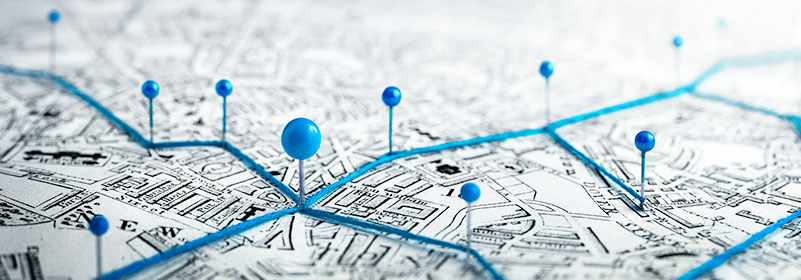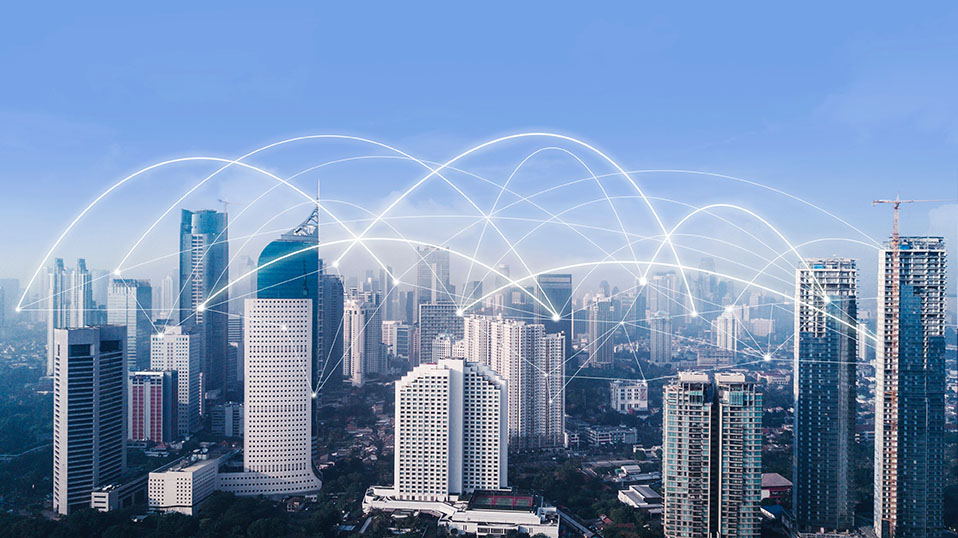Scalable solution for centralized management of distributed properties
To operate buildings efficiently, a direct and automatic interaction of different trades such as lighting, heating and air conditioning, safety systems and fire protection is already state of the art. Often, the requirement for the technical building management also extends over several distributed buildings such as e.g. in the public buildings of a municipality, the branch network of a trade chain, hospitals and nursing homes with more than one building or large hotel complexes.

- Better and consistent overview of all subsystems
- Better decision-making basis due to the wealth of information and a concrete assessment of the situation
- Sharing of components e.g. weather station for several, closely spaced buildings
- Outsource management applications at the master level to the cloud
Advantages
Energy efficiency
- Comparability of the consumption of the individual buildings
- High transparency of consumption and operating data
- Comprehensive optimization of energy use
- Continuous adaptation to changes in user behavior
- Energy optimization through rapid reporting in the event of irregularities
- Cost reduction while maintaining comfort
Cost reduction
- Bundled reporting of the consumption data of all properties
- Evaluation of all historical data for property comparisons, annual evaluations and analysis of potential savings
- Lower costs for configuration and staff training through the use of a unified system
- Minimization of personnel costs through central control via a networked control center
- A home technician replaces several employees on-call in the on-call service or represents them on vacation or in case of illness
- The use of a master visualization saves ongoing personnel costs and reduces training costs
Simple and inexpensive maintenance
- High savings potential in maintenance (e.g. failure of lights)
- By counting the operating hours in all buildings, the purchase of e.g. light sources can be planned, and a better price can be achieved due to the high quantity
Quick action in an emergency
- Alarm overview over several buildings with central recording
- Prompt handling of fault messages with little personnel expenditure (e.g. in the event of failure of the heating or cooling system, shop window lighting, break-in, etc.)
Flexible and future-proof
- Easy expansion of the system
- Expansion to new locations and integration of existing systems, e.g. BMS, possible through the support of open systems (e.g. OPC, KNX, BACnet, access control, CCTV, ...)
Realization of networked properties with server hierarchy
- Connection of independent, local servers with a central server on the master level
- More flexible and efficient building automation through the integration of a large number of interfaces
- Direct communication between the individual trades as well as applications from other areas for e.g. safety and security
- All advantages are also available on the networked properties - Information from several independently working sub-servers are integrated (via e.g. WAN) into a central server via secure VPN connections
- No downtime in the event of a fault in the connection to the higher-level control center (self-sufficient server)
- Presentation of all data via a master visualization
- Main/backup solution possible

